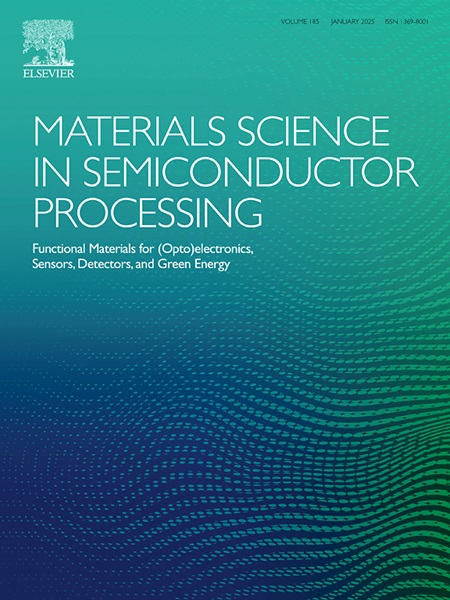Approach to reducing oversaturated boron content in plate poly layer of DRAM
IF 4.2
3区 工程技术
Q2 ENGINEERING, ELECTRICAL & ELECTRONIC
引用次数: 0
Abstract
In this paper, we studied how to lower the boron content in the plate poly layer of DRAM. The plate poly layer is composed of a SiGe film and the boron is used as a precursor. When the boron content is reduced in an oversaturated SiGe film, the Ge relative ratio to Si and the Ge-Ge bond amount increased in the film. Therefore, when Ammonium Peroxide Mixture (APM) + HF wet cleaning was performed to remove particles generated during the back-end-of-line (BEOL) process, the SiGe film was melted and the “mushroom-shaped” defect occurred. This occurred because the Ge-rich film reacted with H2O2 in the APM solution and HF, leading to oxidation and dissolution. To solve this problem, the Si content was increased because compared to Ge, Si underwent less oxidation and can act as a passivation layer in HF solution. This resulted in a decrease in grain size and an increase in wet resistance. Ultimately, this approach serves as a crucial clue for the continued scaling of DRAM devices.
降低DRAM平板多聚层中过饱和硼含量的方法
本文研究了如何降低DRAM平板多聚层中的硼含量。该片状多聚层由SiGe薄膜组成,硼用作前驱体。当过饱和SiGe膜中硼含量降低时,薄膜中Ge与Si的相对比和Ge-Ge键量增加。因此,当使用过氧化铵混合物(APM) + HF湿清洗去除后端线(BEOL)过程中产生的颗粒时,SiGe膜熔化,出现“蘑菇状”缺陷。这是因为富锗膜与APM溶液中的H2O2和HF发生反应,导致氧化和溶解。为了解决这个问题,增加了Si的含量,因为与Ge相比,Si的氧化程度更低,可以在HF溶液中起到钝化层的作用。这导致晶粒尺寸的减小和抗湿性的增加。最终,这种方法可以作为DRAM设备持续扩展的关键线索。
本文章由计算机程序翻译,如有差异,请以英文原文为准。
求助全文
约1分钟内获得全文
求助全文
来源期刊

Materials Science in Semiconductor Processing
工程技术-材料科学:综合
CiteScore
8.00
自引率
4.90%
发文量
780
审稿时长
42 days
期刊介绍:
Materials Science in Semiconductor Processing provides a unique forum for the discussion of novel processing, applications and theoretical studies of functional materials and devices for (opto)electronics, sensors, detectors, biotechnology and green energy.
Each issue will aim to provide a snapshot of current insights, new achievements, breakthroughs and future trends in such diverse fields as microelectronics, energy conversion and storage, communications, biotechnology, (photo)catalysis, nano- and thin-film technology, hybrid and composite materials, chemical processing, vapor-phase deposition, device fabrication, and modelling, which are the backbone of advanced semiconductor processing and applications.
Coverage will include: advanced lithography for submicron devices; etching and related topics; ion implantation; damage evolution and related issues; plasma and thermal CVD; rapid thermal processing; advanced metallization and interconnect schemes; thin dielectric layers, oxidation; sol-gel processing; chemical bath and (electro)chemical deposition; compound semiconductor processing; new non-oxide materials and their applications; (macro)molecular and hybrid materials; molecular dynamics, ab-initio methods, Monte Carlo, etc.; new materials and processes for discrete and integrated circuits; magnetic materials and spintronics; heterostructures and quantum devices; engineering of the electrical and optical properties of semiconductors; crystal growth mechanisms; reliability, defect density, intrinsic impurities and defects.
 求助内容:
求助内容: 应助结果提醒方式:
应助结果提醒方式:


